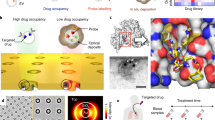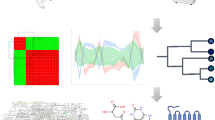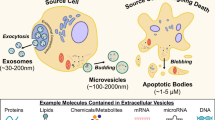Abstract
SOLUTIONS of degraded dextran have been shown to be a promising plasma substitute in a number of clinical trials. The practical problem in designing this substitute is to select dextran of the correct molecular size from the wide range of sizes in a partial hydrolysate. To obtain the maximal effect for the minimal quantity of dextran, the smallest dextran molecules which are retained in the blood vessels should be used.
This is a preview of subscription content, access via your institution
Access options
Subscribe to this journal
Receive 51 print issues and online access
$199.00 per year
only $3.90 per issue
Buy this article
- Purchase on SpringerLink
- Instant access to full article PDF
Prices may be subject to local taxes which are calculated during checkout
Similar content being viewed by others
References
Bull, J. P., Ricketts, C. R., Squire, J. R., Maycock, W. d'A., Spooner, S. J. L., Mollison, P. L., and Paterson, J. S. C., Lancet, i, 134 (1949).
Author information
Authors and Affiliations
Rights and permissions
About this article
Cite this article
RICKETTS, C., LORENZ, L. & MAYCOCK, W. Molecular Composition of Dextran Solutions for Intravenous Use. Nature 165, 770–771 (1950). https://doi.org/10.1038/165770a0
Issue date:
DOI: https://doi.org/10.1038/165770a0



